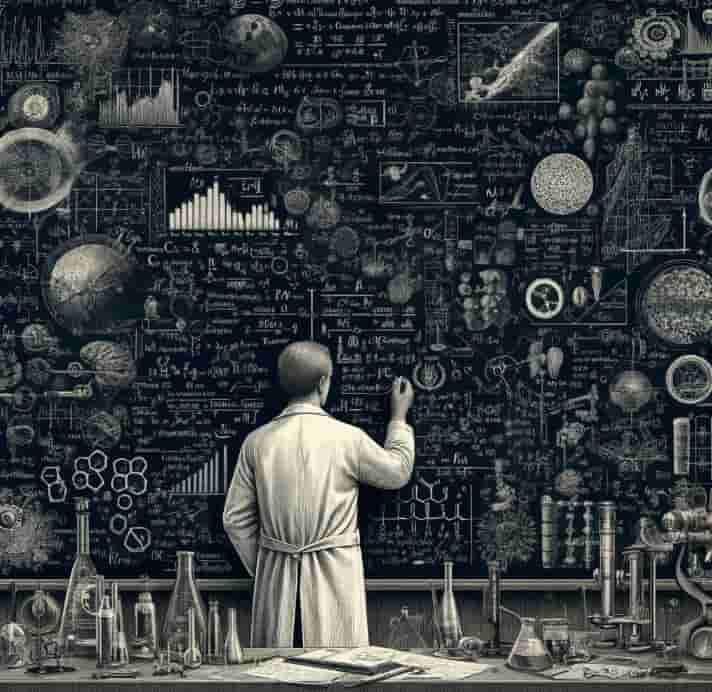Scientific notation is a way to express very large or very small numbers in a compact form. It’s especially useful in fields like science, engineering, and mathematics where such numbers frequently occur. The notation is based on powers of 10. Here’s the general form:
\( a \times 10^b \)
- a is known as the coefficient or significand. It is a number greater than or equal to 1 but less than 10.
- b is the exponent, which is an integer. It tells us how many times to multiply the coefficient by 10.
If b is positive, the number is greater than 1. If b is negative, the number is a fraction, less than 1.
Examples
Large Number: The distance from the Earth to the Sun is approximately 149,600,000 kilometers. In scientific notation, this is written as \( 1.496 \times 10^8 \).
Small Number: The mass of a hydrogen atom is approximately 0.00000000000000000000000167 kilograms. In scientific notation, this is \( 1.67 \times 10^{-27} \) kg.
Why do we need Scientific Notations?
- Clarity: It makes it easier to read and write very large or very small numbers.
- Convenience: It simplifies mathematical operations like multiplication and division. For example,
- \( 2 \times 10^4 \times 3 \times 10^3 = 6 \times 10 ^7 \).
- Standardization: Scientific notation provides a universally accepted way of representing numbers, which is particularly useful in scientific research and communication.
Converting to and from Scientific Notation
To Convert from Standard Notation to Scientific Notation
Move the decimal point in your number until you have a coefficient between 1 and 10. Count the number of places you moved the decimal point; this will be your exponent. If you move it to the left, the exponent is positive; to the right, it is negative.
Scientific Notation Examples : Converting to Scientific Notation
Convert 12345 to scientific notation:
Move the decimal point to the left 4 places to get 1.2345.
The exponent is 4 (since we moved it to the left).
Scientific Notation: 1.2345 × 104
Convert 0.000678 to scientific notation:
Move the decimal point to the right 4 places to get 6.78.
The exponent is -4 (since we moved it to the right).
Scientific Notation: 6.78 × 10-4
Convert 560000 to scientific notation:
Move the decimal point to the left 5 places to get 5.6.
The exponent is 5 (since we moved it to the left).
Scientific Notation: 5.6 × 105
Convert 0.00234 to scientific notation:
Move the decimal point to the right 3 places to get 2.34.
The exponent is -3 (since we moved it to the right).
Scientific Notation: 2.34 × 10-3
Convert 7890000 to scientific notation:
Move the decimal point to the left 6 places to get 7.89.
The exponent is 6 (since we moved it to the left).
Scientific Notation: 7.89 × 106
To Convert From Scientific Notation to Standard Notation
Use the exponent to determine how many places to move the decimal point in the coefficient. If the exponent is positive, move the decimal to the right; if negative, to the left.
Scientific notation simplifies the handling of very big or small numbers, making calculations and comparisons easier to manage.
-
Scientific Notation: 4.56 × 103
The exponent is 3, so move the decimal point 3 places to the right.
Standard Notation: 4560
-
Scientific Notation: 7.89 × 10-2
The exponent is -2, so move the decimal point 2 places to the left.
Standard Notation: 0.0789
-
Scientific Notation: 1.23 × 105
The exponent is 5, so move the decimal point 5 places to the right.
Standard Notation: 123000
-
Scientific Notation: 3.456 × 10-4
The exponent is -4, so move the decimal point 4 places to the left.
Standard Notation: 0.0003456
-
Scientific Notation: 9.01 × 102
The exponent is 2, so move the decimal point 2 places to the right.
Standard Notation: 901





0 Comments